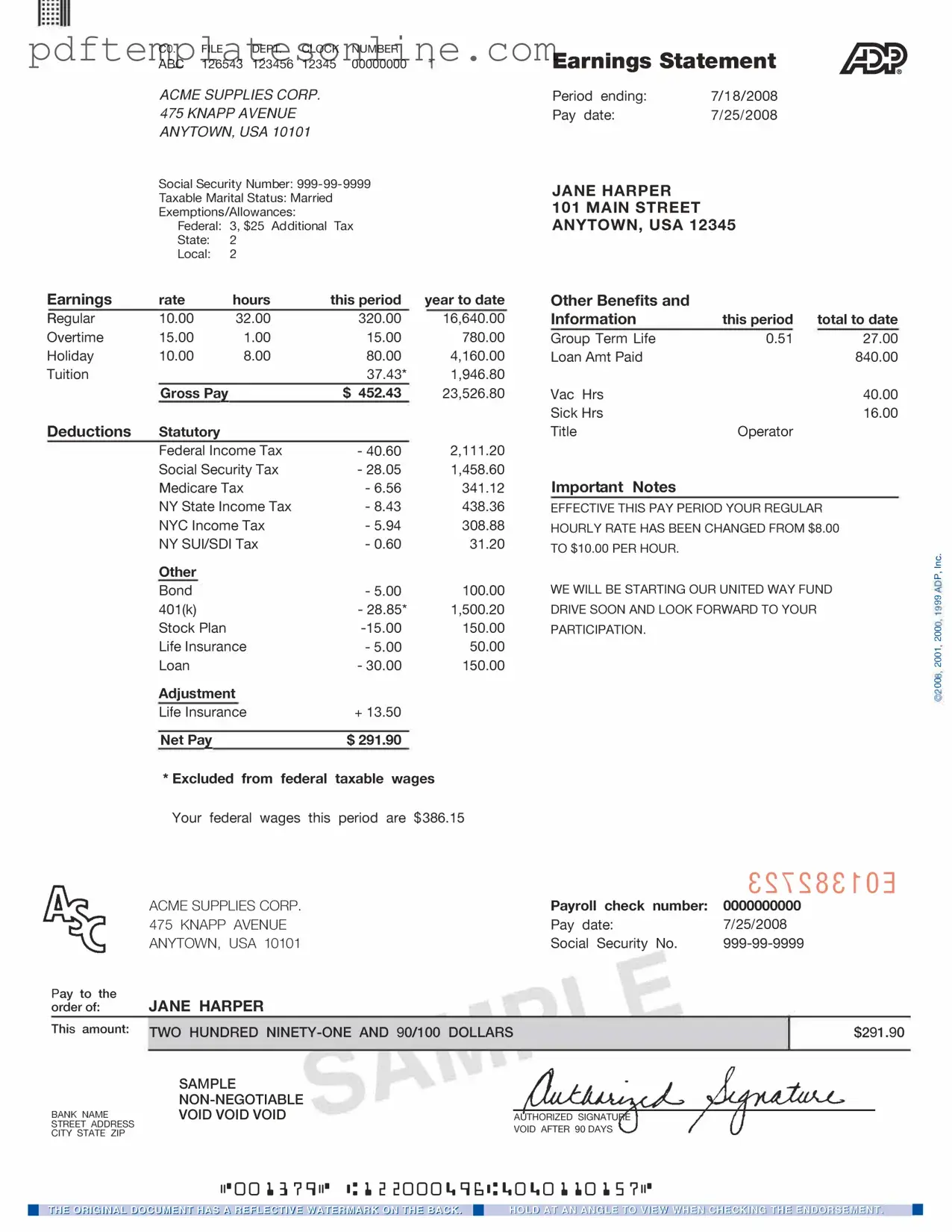When filling out the ADP Pay Stub form, many individuals overlook crucial details that can lead to significant errors. One common mistake is not verifying personal information. A simple misspelling of a name or an incorrect Social Security number can create complications in payroll processing. Always double-check these details to ensure accuracy.
Another frequent error involves misunderstanding the pay period. Employees sometimes fail to indicate the correct start and end dates for the pay period. This oversight can result in receiving an incorrect paycheck amount, which may lead to financial discrepancies. It’s essential to be clear about the pay period to avoid such issues.
Many people also neglect to update their withholding allowances. Life changes, such as marriage or the birth of a child, can affect tax withholding. Failing to adjust these allowances may lead to under-withholding or over-withholding of taxes, which can have financial repercussions come tax season.
In addition, individuals often forget to account for deductions. Whether it’s for health insurance, retirement plans, or other benefits, not including these deductions can skew the final pay amount. Review the deductions carefully to ensure they reflect the current selections.
Another mistake is not keeping a copy of the completed form. Without a record, discrepancies can arise later, making it difficult to resolve issues. Maintaining a copy provides a reference point for future inquiries or corrections.
Lastly, some individuals rush through the process without fully understanding the form's sections. Each part of the ADP Pay Stub form serves a purpose, and taking the time to comprehend each section can prevent errors. A thorough review can save time and frustration in the long run.
